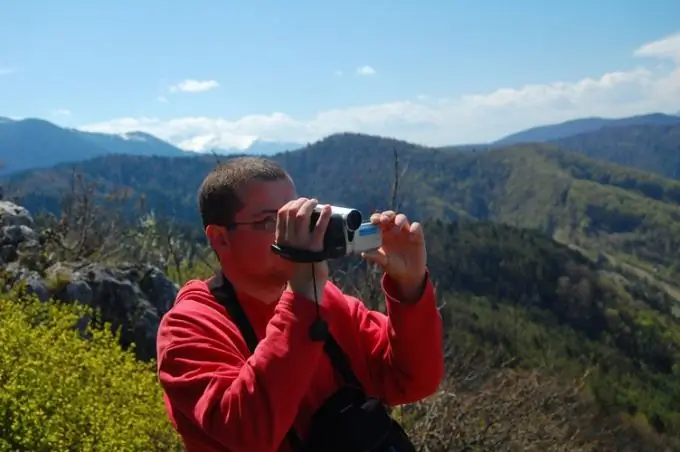One of the main problems with a video shot with a non-tripod camera is shaky. Of course, this problem can be dealt with to some extent by activating an optical or electronic stabilizer before shooting. But the shaky image that you have already downloaded from the camera to your computer can only be helped by software processing.

Necessary
- - video;
- - Adobe After Effects program.
Instructions
Step 1
You can use the capabilities of After Effects to stabilize your video. Import the movie that needs processing using the File option from the Import group of the File menu. If you prefer keyboard shortcuts, use Ctrl + I to import the file.
Step 2
Drag the imported clip into the Timeline palette with the mouse or the Add Footage to Comp option from the File menu. Place the pointer of the current frame at the beginning of the fragment from which the video should be stabilized, if you do not need to process the entire video.
Step 3
Use the Stabilize Motion option from the Animation menu. The processed video with one tracker will appear in the layer palette. Adjust the stabilization parameters in the Tracker Controls palette. If you do not see this palette in the program window, use the Tracker Controls option in the Window menu.
Step 4
Specify the parameters to be stabilized. By default, the program tracks changes in the Position parameter. In other words, you can compensate for vertical and horizontal camera shake. If your picture, among other things, also wobbles, check the Rotation checkbox. After that, a second tracker will appear in the layer palette.
Step 5
Install trackers on image fragments, the movement of which will be tracked by the program. These should be small fragments of the background, which, in theory, should be stationary and move in the frame solely due to the jerking of the camera. Objects should be different from the surrounding background in color, saturation or brightness. By default, the difference in brightness is tracked.
Step 6
If you have placed trackers on objects that differ from the background in color, click on the Options button in the Tracker Controls panel. Select the RGB item in the settings and click on the OK button.
Step 7
Click on the Analyze forward icon in the Tracker Controls panel. After clicking on this button, the process of analyzing the movement of points marked by trackers will begin. You can track the analysis in the layer palette window. If one of the trackers is detached from the object to which it was originally attached, press the Reset button and attach the tracker to another object.
Step 8
After the analysis is complete, click the Apply button. Start video preview using the RAM Preview option from the Preview group of the Composition menu.
Step 9
Increase the size of the image if necessary. This will help prevent the edge of the layer with your video from appearing in the player window, shifting to compensate for camera movement. To increase the size of the image, click on the arrow to the left of the video layer in the Timeline palette. In the expanded menu, expand the Transform item in the same way. Edit the Scale parameter so that during playback in the player window you will not see areas of the black background.
Step 10
Save the stabilized video using the Add to Render Queue option from the Composition menu. In the Render Queue palette, click on the Output to label and specify the folder where the file will be saved. Press the Render button to start processing your video.






